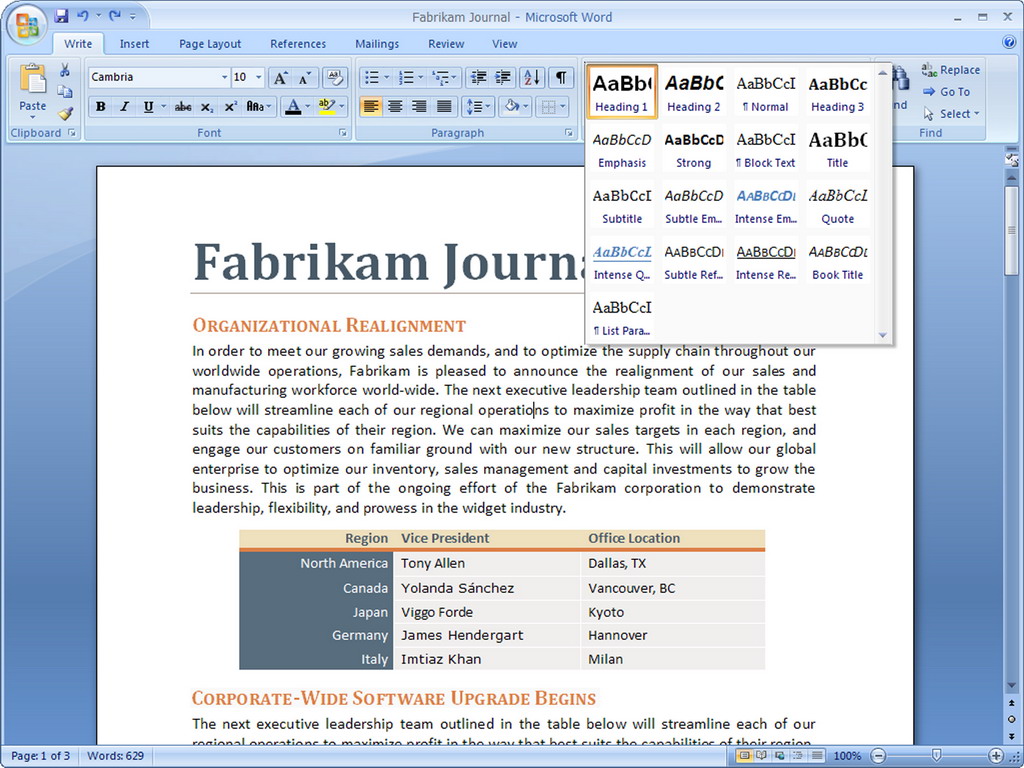This packet sniffer tool for Mac users comes in several versions. It aids in allowing visibility of network in varying degrees that can be defined as per your requirements. With the passive decoding and recording of network data, you can now determine the security strength of. With DaisyDisk you can free up disk space by quickly finding and deleting big, useless. Download Usb Port Sniffer Mac Software. AirClick USB for Mac OS v.1.1.1 A remote for your computer. AirClick uses RF signals that travel through walls for control anywhere in your home or outside. The receiver module attaches to any available USB port and receives signal from up to 60 feet away. ManageEngine Netflow Analyzer. ManageEngine has recently updated is Netflow analyzer to give. I know that KisMac (a Mac OS X app, that can passively sniff Wireless networks) will show all wireless MACs that have associated with any base station that it can see traffic from though it also sometimes shows the MAC of the host you're sniffing with, so I suspect that most of the other common wireless LAN tools can do it too.

WiFi networks have become the most predominant method for U.S. households with broadband access to connect to the Internet. According toncta.com, 89% of the United States home broadband users employ a wireless router and use it to attach multiple devices to the net. WiFi hotspots have popped up all over the place and many mobile users make great use of them while sipping a coffee and monitoring their recent posts.
The aspect of wireless networks that is of most concern is the possibility that its security can be breached. An attack on a wireless network can be conducted from a distance, minimizing the potential for the perpetrator to be apprehended. One of the main tools used in WiFi attacks is called a WiFi sniffer. Let’s take a closer look at what exactly a wireless sniffer is and how it can impact your WiFi network.
What is a WiFi Sniffer?
A WiFi sniffer is a specific type of network analyzer or packet sniffer that is designed to work with wireless networks. WiFi sniffing can be accomplished with a dedicated piece of electronic equipment or a software application. Wireless network sniffing is akin to wiretapping a phone line, only without the court order that legalizes the activity.
There are valid and legal uses for a wireless sniffer tool to be used. An example is where a network administrator makes use of one to secure or monitor their network. Home users may employ a sniffer to better understand how their network operates. Unfortunately, a prime reason that WiFi sniffers are used by unscrupulous individuals is to attempt to collect information from, or gain access to, an unsecured network. A wireless sniffer allows someone to attack your network from a distance, making it hard to determine if there are attempts to compromise your data.
How Does a WiFi Sniffer Work?
WiFi sniffers come in two flavors: hardware and software. They perform the same tasks, though the software route may be more popular in most cases. You can obtain software WiFi sniffers for Windows, Mac, and mobile operating systems. In the case of a mobile device, you are in essence turning it into a hardware sniffer when using it with a sniffing application.
Hardware WiFi Sniffers
It does not take any special level of technical expertise to operate a hardware WiFi sniffer. Most devices are small and portable, able to easily fit in your pocket or laptop bag. You point the device in the direction where you believe a wireless network can be detected. You will be alerted by display lights when a wireless network is found within range of your device.
A WiFi sniffer for Android devices uses add-on tools and will offer a similar display when searching for networks. Quality hardware sniffers will be able to detect a wireless signal in spite of interference from Bluetooth devices, microwaves or cell phones.
Software WiFi Sniffers
There are many different software applications that serve the purpose of WiFi sniffing. You can download these tools for just about any operating system. Some of these tools have advanced features that allow you to do more than just locate the nearest wireless network.
Tools such as Wireshark and Network Miner serve as WiFi sniffers for the Windows platform. Users can download tools such as aircrack-ng or Zanti to perform WiFi sniffing on an Android device. There are many applications that enable WiFi sniffing on a Mac as well. We are going to use a free WiFi sniffer named KisMAC to see how you go about capturing WiFi traffic.
Capturing WiFi Traffic with a Wireless Network Sniffer
We are going to go through the steps required to capture WiFi traffic using the KisMAC software WiFi sniffer for the Mac. This free WiFi sniffer will run on your Mac OS X or macOS system. It is not a tool meant for the novice computer user, and troubleshooting will need to be done with some extensive web searches. That being said, here’s what you need to do.
Unfortunately, since KisMAC is an open source project there are limitations on its ability to function on newer MacBooks with the Airport Extreme Card. In these cases, you must obtain a USB WiFi card that will enable the tool to perform its sniffing activities.
- Download KisMAC and install it on your Mac.
- Go to Preferences -> Drivers and select the WiFi driver device to be used.
- Click on Add to use the selected driver.
- Click Start Scan and provide KisMAC with your administrator’s password.
- You will be presented with a list of wireless networks that are within range and the type of security they are using. In the case of networks with no security, you can directly join them. Networks protected by WEP or WPA will need a password to join.
- Click on the network you are interested in and you will start to accumulate data packets.
Once you are collecting data packets from the network you can attempt to crack the WEP or WPA security which will allow you to access the network. We leave those steps to be found with your own initiative.
Advantages and Issues Associated With Using a WiFi Sniffer
Obviously, some of the advantages of using a WiFi sniffer may not coincide with the privacy laws of your particular jurisdiction. It is legal to use a sniffer on your own network or to discover where wireless networks are located. Cracking passwords and gaining access to a network with the use of a sniffer is a crime and it is not our intention to lead you down that path.
WiFi sniffers definitely have valid uses in the business environment and can be an important tool in the hands of network administrators. These will normally be commercial-grade sniffers and often are implemented in hardware devices. Using this tool, admins can perform diagnostic tests on their network and troubleshoot problems. They can also help detect if the network has been subject to unauthorized access.
A powerful tool such as WiFi sniffer in the wrong hands can cause serious trouble for your network and the data it transmits. A hacker can obtain your account information, steal passwords, read your emails, and track your online movements.
Protect Your Data from WiFi Sniffers
Some simple steps can go a long way toward protecting your home network and your personal data when using unsecured WiFi at your local Starbucks. For home networks, ensure that your WiFi router is set to WPA encryption and choose a password that it at least 9 characters long. If you go up to 12 characters it is virtually impossible to crack your password in the hacker’s lifetime.
When accessing WiFi in locations that are not secured or where security is doubtful, follow these practices to safeguard your data. You need to assume that the nice guy with the laptop sitting across from you is there to steal your banking info. To thwart these kinds of attacks:
- Refrain from doing any banking or financial activity while connected to an unsecured WiFi network.
- Only use https encrypted websites.
- Use a VPN to route your Internet activity through encrypted networks that cannot be compromised by hackers.
Now that you have seen what a WiFi sniffer can do and how it can impact your online activities, you should be better able to protect yourself and your data. The convenience of wireless networks can be enjoyed without risk if you take the necessary precautions. Make sure that you do.
Related articles:
Every IT professional, from companies big or small, knows the value of data.
Troubleshooting is always an act that is half instinct and half data – and Packet Sniffing is where the data comes in.
A Packet Sniffer is the tool that helps you figure out if packets are being sent, received, and arriving safely on your network, but they can also do so much more!
Below is a list of some of the Best Packet Analyzers and Sniffers and some of the features that they have built in for you to extract network information and data.
They all tend to have the same sort of functionality – you can view packets being sent and received on some level or another, but many of the tools have certain nuances that allow them to shine in certain situations or network environments; the trick is knowing which one!
Ultimately packet sniffing is the go to tool when you've got a network issue that you can't quite isolate to a single machine or protocol and it's time to start digging deep.
There's almost too many choices in this category of software.
Some of them are a bit ‘old-school'; they're grounded in terminal font and command-prompt interfaces and aren't that user friendly at first glance.
Others are flashy much more geared towards a visual audience with easy installation, or portable executables, and plenty of graphs and tables.
They also range from free to quite expensive for corporate licensing!
Here's the Best 8 Free Packet Sniffers and Network Analyzers for Traffic and Data Analysis:
1. Solarwinds Bandwidth Analyzer 2-Pack – Free Download
This particular software is a two-piece deal with similar, but distinct, functionality that goes hand in hand.
The Network Performance Monitor, as the name implies, monitors network performance and is going to be one of the Best Network Data Sniffers on the market if you want an overall view of what's going on in your network.
What this means, more plainly, is it pays mind to more of the pure motility of the network.
Transmission speeds and rates, packet transmission reliability, and even comes pre-configured with a wide variety of visual aids and sharp looking charts to make irregularities easier to spot.
Its counterpart, the Network Analyzer, again with a self-explanatory name, is more focused on the traffic itself.
While the Performance Monitor is focused more on the overall view of the network's performance, the Network Analyzer is paying a lot more attention to the network on a more granular level.
In particular this part of the program ferrets out the bandwidth hogs and anomalies, sorted by merit of users, protocols, or applications. Available for Windows environments only.
Download & More Information:
2. ManageEngine Netflow Analyzer
ManageEngine has recently updated is Netflow analyzer to give you greater insights in your network traffic and bandwidth to see whats really going on in your networks.
With capabilities that allow you to weed out bandwidth hogs and resource heavy applications, you'll be happy to you chose this product over ones that dont give you historical data.
This ManageEngine product gives you detailed views into the packets that go through your networks and help you analyze them further.
Protocols and Capabilities include:
- Traffic & Packet Analysis
- Netflow, sFlow, j-flow, Netstream capable
- Monitor Voice, Video & Network Data quickly from Centralized dashboard!
- Utilize Packet analysis to perform network Foresnic & Analysis!
- and much more!
Click the link below to get started today with a Free Download of this product in your network!
3. Wireshark
WireShark is relatively new tool in the broad scheme of network diagnostics, and it does a great job finding a middle ground between raw data and visual representations of that data.
It's simple, it's compatible, it's portable. It does what needs doing and it does it succinctly.
It's got a clean UI, plenty of options for filtering and sorting, and, best of all for some of the multi-platform folks, it jives happily on any of the big three in terms of OS.
Add to that the fact that it's open-source and a Free Sniffer and you've got a compelling tool to reach for when you need some quick diagnostics. Available for *NIX, Windows, and OSX environments.
Download & More Information:
4. tcpdump
Tcpdump is something of an older tool and, to be frank, it looks like it. But there's a certain power in tools that are so cut and dry – it does what it needs to do, does it with as little a footprint as possible, and does it cleanly.
It may be harder for some professionals to weed through the stark tables of data, but in some environments, or on a machine barely running, minimal is best.
It's native and has its origins in the *NIX environment, but there are several Windows ports that do the job well.
It has all the functionality you'd want and need from a sniffer – capturing, recording, etc. – but it does lack a lot of the fancier capabilities of more robust software.
Tcpdump is often called for due to its sheer reliability and simplicity. Available for *NIX and Windows environments.

Download & More Information:
5. Kismet
Kismet is more than just a packet sniffer and, in fact, delves into wide range of functionality.
Kismet even has the ability to sniff and analyze traffic of hidden networks or un-broadcasted SSIDs!
Tools like this can be strangely invaluable in the right circumstances when there's something unknown causing troubles and you can't just find it – Kismet can sniff it out, if it happens to be a rogue network or AP acting up nobody mentioned they setup not quite right.
As one can imagine by the nature of wireless networking it's a little more complex when it comes to sniffing, which is why a specialized tool like Kismet not only exists but is looked to frequently.

Kismet is an excellent go to if you've got a lot of wireless traffic and wireless devices and need a tool that's better suited to handling a wireless-heavy network. Available for *NIX, Windows Under Cygwin, and OSX environments.
Download & More Information:
6. EtherApe
EtherApe has a lot of the same sort of functionality that WireShark does and, to boot, it also boasts being both Open-Source and free of any cost!

What makes it different, though, is that it's far more graphically driven.
Whereas WireShark has you peering at lists of numbers and comparing network throughput in a more numerical sense, EtherApe takes the focus more to the visual and graphical realm.
Some people just plain prefer the visual approach, and EtherApe tends to take precedence over WireShark for those folks. Available for *NIX and OSX environments.
Download & More Information:
7. Cain and Abel
This particular software has a bit of a curious name, and it belies the remarkable breadth of tasks the program can perform.
If your needs extend well beyond simple sniffing, then this may be the tool for you.
It can even perform limited password recovery, do dictionary attacks to retrieve lost credentials, peruse VOIP data on the network, analyze routing, and so much more.
This is a powerful tool that can really shine in those rare instances when you need to do a little search and recovery on a network.
Available for Windows environments only.
Download & More Information:
Ip Sniffers For Mac
8. NetworkMiner
Network miner is another tool that does more than sniff and, arguably, would be better suited to ferreting out problematic users or systems on a network than overall diagnosis or monitoring as a whole.
Whereas other sniffers focus on the packets being sent back and forth, NetworkMiner is paying more mind to the ones doing the sending and receiving.
An excellent tool for finding problem machines or users.
Available for Windows environments only.
Download & More Information:
9. KisMAC
This software's name says it all – it's a lot like Kismet, but for the Mac environment. KisMAC! Simple as that.
These days Kismet has a Mac environment port, so it may seem redundant, but it's worth emphasizing that KisMAC actually has its own codebase and was not directly derivative from Kismet's.
Ip Sniffer For Mac
Of particular note is that it offers several mapping and de-auth features on Mac that Kismet itself doesn't provide, and due to its unique codebase you may find it does the job better than Kismet itself at times. Available for OSX environments only.
Ip Sniffers For Mac
Download & More Information:
Sniffer For Mac
Conclusion
Using Network Analyzers and Packet Sniffers will become a necessary tool when you have network issues of almost any kind – whether it's performance, dropped connections, or issues with network-based backups.
Just about anything that involves transmitting or receiving data on the network can often be fixed using some clues from the above software.
Packet sniffing is invaluable when you've got to really dig down beyond the top layer of a problem to get a better picture of what's happening, or what isn't happening and should be!